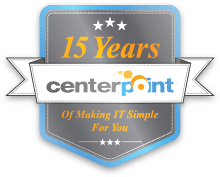 The word, “specious” exists, so that in a single word you can warn others of a deal that looks extremely attractive but does not really pay off. SXXXXt Airlines, with your outrageously low fares and roughly $50 per carry-on OR checked bag policy, we are talking to you!
The word, “specious” exists, so that in a single word you can warn others of a deal that looks extremely attractive but does not really pay off. SXXXXt Airlines, with your outrageously low fares and roughly $50 per carry-on OR checked bag policy, we are talking to you!
The fact is: there are specious contestants in every category, whether you are a consumer or a B2B, whether you are an enterprise or an SMB. Our market is full of them too.
This article will shift gears from features to strategy by pointing out the flaws inherent in skin-deep vendor analysis. Whether you are meeting a company for the first time, or trying to dig more deeply into your vendor management strategy, this article will help you filter the strategic partners from the one-hit wonders.
No matter the function, no matter the market, businesses are still obsessed with features and technical competency. And of course they have every reason to focus on features – because the product is what employees will use; the product defines the organization’s IT capabilities.
When execs sit around the conference table to discuss their IT needs, the lines of communication start and can also end with the capability of the software. Marketing needs a “solution” that will automate communications and report data. Finance needs a tracking tool and synchronization. Sales needs a cloud solution so that reps can update data from the field. And the list goes on until everyone is happy.
So it is no wonder that vendors can also focus on features (sometimes to the exclusion of service or vision for their products). They are rewarded for thinking in incremental framework, as opposed to disruptive framework.
Disruptive is what happens when old tools are combined in new and value-adding ways. By their very nature, features are old tools and old, value-adding ways. Yes, features are incremental selling points, but the vast majority of the value should land in the money box way after the initial sale.
We will end with this short list of value-adds external to features:
A feature is worthless if people do not use it; a piece of software that automates a business process is not as helpful as a piece of software that gives the C-Suite new options… A communications app is measured by how many people rely on it, and how often.
Choose vendors and value-added resellers who have the potential to join your conference table and add strategic insight regarding the technologies they manage. That is the real opportunity today.
Call our business managed IT services department directly at (404) 777-0147 or simply fill out this form and we will get in touch with you to set up a getting-to-know-you introductory phone call.
Fill in our quick form
We'll schedule an introductory phone call
We'll take the time to listen and plan the next steps
11285 Elkins Rd Suite E1, Roswell, GA 30076
© Copyright 2025 Centerpoint IT. All Rights Reserved. Website in partnership with Tech Pro Marketing. | Privacy Policy
Get Immediate Help For All Your Technology Issues (404) 777-0147

If you want our team at Centerpoint IT to help you with all or any part of your business IT, cybersecurity, or telephone services, just book a call.
Fill in your information below to get started today.
"*" indicates required fields
Fill in your information below to schedule now.
"*" indicates required fields
Before your organization commits to 1, 2, 3 or even longer managed IT services contract, understand what you’re getting. Centerpoint IT gives you the facts in our Managed IT Services Buyer’s Guide.
Enter your information below and we’ll send it over.
"*" indicates required fields

We are turning 15 and want to celebrate this milestone with you because without you this would not have been possible. Throughout this year look for special promotions on services and tools aimed at Making IT Simple for You so you can focus on your business.

We are turning 15 and want to celebrate this milestone with you because without you this would not have been possible. Throughout this year look for special promotions on services and tools aimed at Making IT Simple for You so you can focus on your business.
https://calendly.com/centerpoint-it/discovery-call